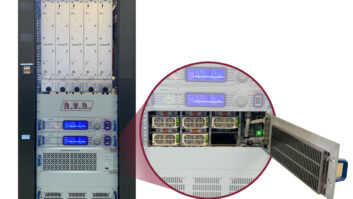
You’ve heard about the “Energy Star” rating. How about a “Transmitter Energy Efficiency Award” that would help you make purchasing decisions about your next transmitter?
It’s a concept put forth in a white paper issued today by engineering consulting firm Cavell, Mertz & Associates with backing from NAB’s technology advocacy program FASTROAD.
The program published a paper on the topic of power-efficient broadcast facility transmission design for radio and TV stations. It includes a primer on power-efficient transmission design for stations that are considering modifying or building RF facilities for over-the-air radio and DTV broadcasting.
(click thumbnail)
A graphic from the Cavell Mertz FASTROAD report shows transmitter efficiencies for sample FM hybrid and FM digital transmitters. “Topics include historical information on the evolution of transmitter efficiency, the impact of cooling system requirements on overall plant efficiency and a brief discussion of ‘green’ energy alternatives,” according to a summary.
The authors also propose a Transmitter Energy Efficiency Award for broadcast transmitters. They set up criteria and measurement methods that can be used to compare transmitters. Such a system could help buyers better estimate costs as well as make purchases that are more environmentally friendly.
“This award would be available for the top 25% most efficient transmitters in each class, so that if a broadcaster were choosing a transmitter that has a TEEA ‘seal,’ they would know that it is one of the most efficient transmitters available,” the authors write. The graphic here shows transmitter efficiencies for sample FM hybrid and FM digital transmitters.
Cavell Mertz is also working on a Web-based tool to allow a station engineer or manager to do a “what if” study of transmitter site topology decisions and their impact on facility operational costs, rather than just one-time capital costs. That is expected to be launched by the end of March.
Read the paper here.













